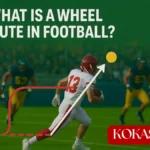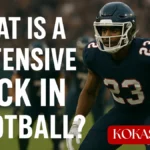Playing cornerback is one of the most challenging positions in American football. If you’ve ever wondered what makes this defensive back position so special, you’re in the right place. Let’s break down everything you need to know about the cornerback role in simple terms.
What is a Cornerback in Football?
A cornerback is a defensive player who lines up on the outside edges of the defensive backfield. The cornerback position is part of the secondary, which includes all defensive backs on the field. These players are the last line of defense against passing plays.
Cornerbacks typically line up across from wide receivers. Their primary job is to prevent receivers from catching passes. Think of them as the shield between the offense and big plays downfield.
Key Facts About Cornerbacks:
- Usually two cornerbacks play at the same time
- They’re among the fastest players on the field
- Cornerbacks must have excellent vision and quick reflexes
- They work closely with safeties in the secondary
- Most NFL teams use at least three cornerbacks during games
- Playing cornerback requires both physical and mental skills
The cornerback job has become more important as teams throw the ball more often. In today’s NFL, some teams throw on over 60% of their plays. This makes good cornerbacks very valuable.
Why is it Called a Cornerback?
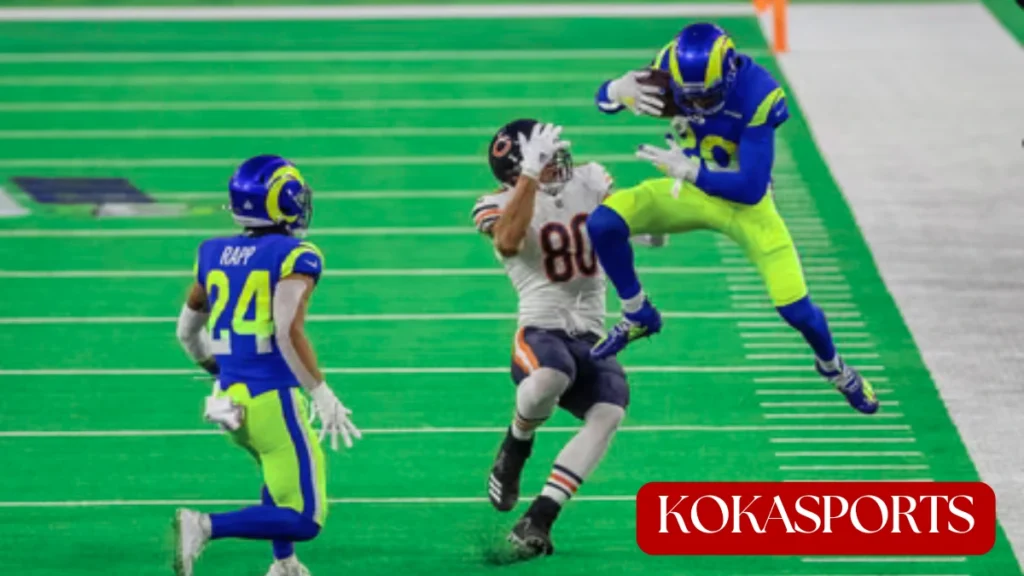
The name “cornerback” comes from where these players line up on the field. They position themselves in the “corners” of the defensive formation, near the sideline. This positioning allows them to cover wide receivers who run routes toward the outside of the field.
The term has been used since the early days of American football. As passing games evolved, the cornerback position became more specialized and important. In the 1960s and 1970s, cornerbacks were often just fast players who could run. Today, they need much more skill.
Read More: What is a Defensive Back in Football? Understanding Defensive Back Position
Evolution of the Position:
- 1920s-1940s: Basic coverage, mostly run stopping
- 1950s-1960s: More passing, need for speed
- 1970s-1980s: Zone coverage becomes popular
- 1990s-2000s: Man coverage and press coverage
- 2010s-Present: Complex schemes, multiple types of defensive backs
Cornerback Position on the Field
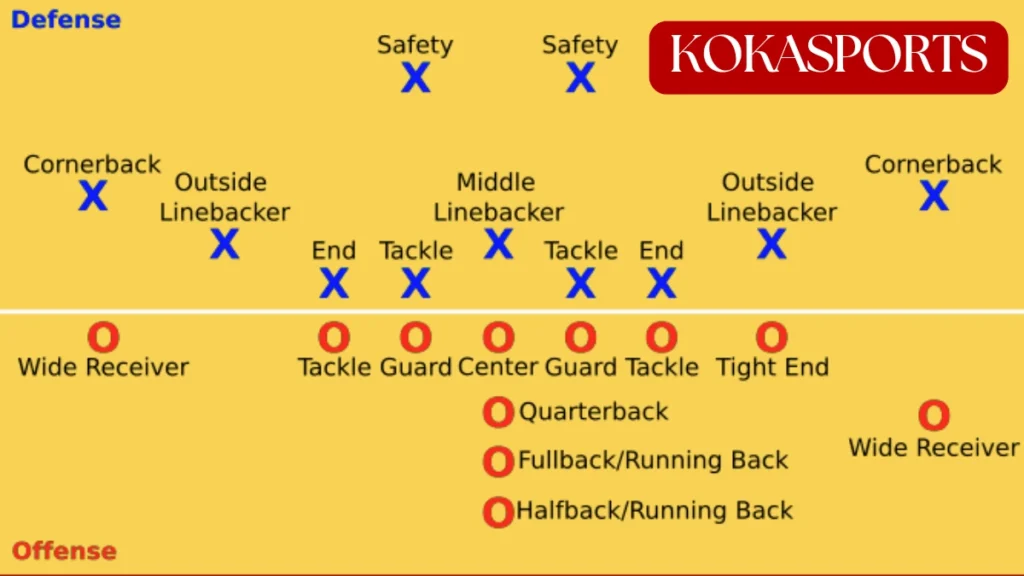
Cornerbacks have specific spots where they line up depending on the situation:
Alignment Basics:
| Position | Distance from Line | Coverage Area | When Used |
|---|---|---|---|
| Press Coverage | At line of scrimmage | Tight on receiver | Short yardage, red zone |
| Off Coverage | 5-8 yards back from the line | Cushion coverage | Normal downs |
| Bail Coverage | 10+ yards deep | Deep third protection | Prevent big plays |
The right cornerback usually covers the left side of the offense, while the left cornerback handles the right side. This might seem backward, but it’s because they face the offense.
Cornerbacks also need to know where help is coming from. The free safety usually helps with deep coverage, while strong safeties help more with run support.
What Does a Cornerback Do? The 5 Essential Responsibilities
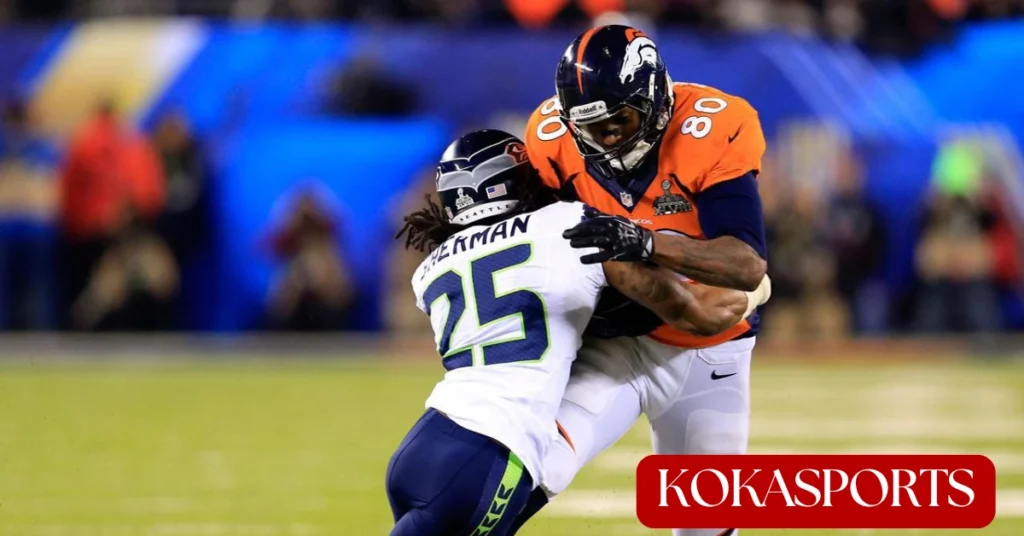
1. He Must Be Disruptive
A great cornerback doesn’t just follow receivers around. They actively disrupt passing routes. Here’s how:
- Jam receivers at the line of scrimmage
- Use legal hand fighting techniques
- Break up the timing between quarterback and receiver
- Force receivers off their planned routes
Example: When a receiver tries to run a quick slant, a cornerback can jam them at the line to throw off the timing of the pass play.
Being disruptive also means:
- Reading the receiver’s body language
- Anticipating route breaks
- Using hands to redirect receivers
- Creating doubt in the receiver’s mind
2. He Must Limit Damage
Even when a cornerback gets beaten, their job isn’t over. They must minimize big plays:
- Chase down receivers who get behind them
- Force catches toward the sideline instead of the middle
- Work with safety help to prevent touchdowns
- Make sure one missed tackle doesn’t become a big play
Good cornerbacks never give up on a play. Even if they get beaten, they keep running and try to make a tackle or force an incomplete pass.
3. He Must Make Tackles
Cornerbacks aren’t just coverage specialists. They’re also responsible for covering run support:
- Stop running backs who break to the outside
- Make open-field tackles in space
- Support on running plays near the sideline
- Tackle after interceptions or fumble recoveries
Tackling is often overlooked when people think about cornerbacks. But they need to be solid tacklers because they’re often the last person who can stop a big play.
4. He Must Communicate with Others
The defensive backfield works as a team. Cornerbacks must constantly talk with:
- Free safety and strong safeties
- Linebackers about coverage assignments
- Other defensive backs about route combinations
- The defensive coordinator about adjustments
Communication includes:
- Calling out formations before the snap
- Warning teammates about crossing routes
- Letting others know about hot routes
- Making adjustments during the play
5. Special Situations
Cornerbacks handle many special situations:
- Red zone coverage where field space is limited
- Goal line stands against short-yardage plays
- Blitz packages where they might rush the quarterback
- Special teams coverage on punts and kicks
In the red zone, cornerbacks have less field to work with. This makes their job harder because receivers have less room to run, but it also means cornerbacks have help from the shortened field.
5 Successful Cornerback Traits
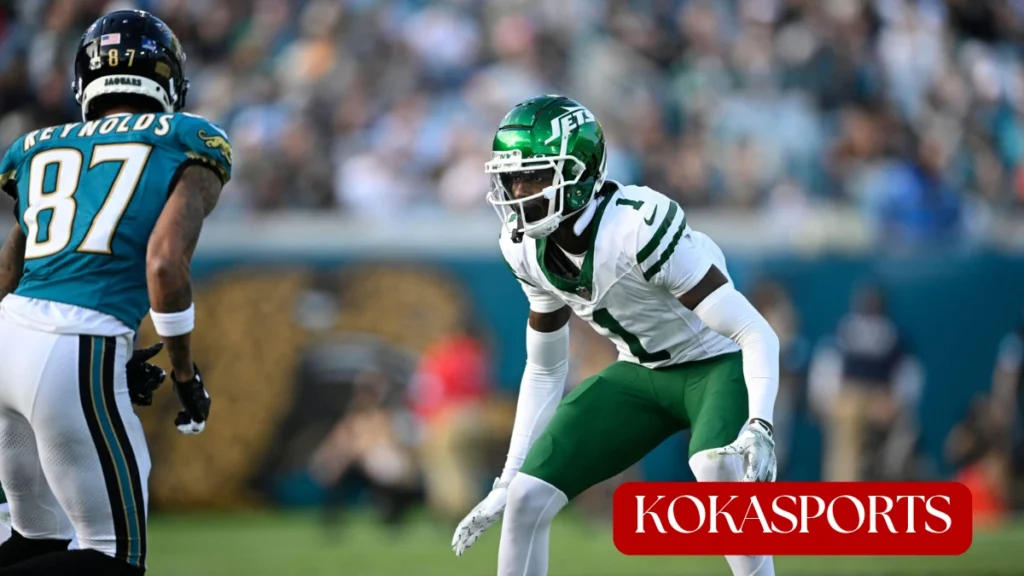
1. Cornerbacks Have Good “Length”
Length in football means more than just height. It includes:
- Long arms for batting down passes
- Good wingspan for covering receivers
- Reach advantage in press coverage
- Ability to disrupt without getting penalties
Charles Woodson, one of the best cornerbacks of all time, used his length perfectly. At 6’1″ with long arms, he could jam receivers and still recover to make plays on the ball.
Length helps cornerbacks in several ways:
- Disrupting passes without interfering
- Reaching around receivers for interceptions
- Making tackles on bigger players
- Creating problems for quarterbacks‘ vision
2. Cornerbacks Have Great Ball Skills
Ball skills separate good cornerbacks from great ones:
- Hand-eye coordination for interceptions
- Ability to track the ball in flight
- Quick hands for pass breakups
- Strong hands to secure interceptions
Ball Skills Training Drills:
- Tennis ball drills for hand quickness
- Jugs machine work for catching practice
- Two-ball drills for concentration
- Tip drill practice for reaction time
- Wall ball drills for hand-eye coordination
Great cornerbacks think like receivers when the ball is in the air. They want to catch every ball thrown their way.
3. Cornerbacks Have Great Agility
Agility helps cornerbacks change direction quickly:
- Hip flexibility for smooth transitions
- Quick feet for staying with receivers
- Balance when changing direction
- Acceleration out of breaks
Agility is different from straight-line speed. A cornerback might not be the fastest player in a 40-yard dash, but they need to be quick in short spaces.
4. Cornerbacks Have Great Instincts
Football IQ is crucial for cornerbacks:
- Read offensive formations before the snap
- Recognize route patterns as they develop
- Anticipate where the quarterback will throw
- React quickly to unexpected plays
Good instincts come from:
- Studying film of opponents
- Understanding offensive tendencies
- Recognizing patterns in games
- Learning from mistakes
5. Mental Toughness
Playing cornerback requires incredible mental strength:
- Short memory after giving up big plays
- Confidence to press elite receivers
- Focus during long games
- Resilience when facing adversity
Mental toughness might be the most important trait. Cornerbacks will get beaten sometimes. The great ones forget about it quickly and focus on the next play.
Types of Defensive Backs
Understanding the types of defensive backs helps explain how cornerbacks fit into the bigger picture:
Standard Secondary (Four Defensive Backs):
- Two cornerbacks (outside corners)
- One free safety (deep middle)
- One strong safety (run support)
Nickel Package (Five Defensive Backs):
- Two cornerbacks (outside)
- One nickel back (slot coverage)
- Two safeties
Dime Package (Six Defensive Backs):
- Three cornerbacks
- Three safeties
- Used on obvious passing downs
Teams today use five defensive backs or more on most passing downs. This shows how important the defensive back position has become.
Coverage Types for Cornerbacks
Man Coverage
In man coverage, each cornerback is responsible for covering one specific receiver. This requires:
- Tight coverage throughout the route
- Physical play at the line of scrimmage
- Excellent footwork to stay with receivers
- Individual accountability for assignments
Man coverage puts a lot of pressure on cornerbacks. They get no help from teammates and must stay with their receiver everywhere they go.
Zone Coverage
In zone coverage, cornerbacks cover areas of the field instead of specific players:
- Defensive backs protect assigned zones
- Better run support from secondary
- More communication between players
- Pattern recognition skills needed
Zone coverage can be easier for cornerbacks because they get help from teammates. But they need to be smart about when to pass receivers off to other defenders.
Best Cornerbacks of All Time

NFL Legends:
- Deion Sanders – “Prime Time” was the fastest cornerback ever
- Charles Woodson – Won the Heisman Trophy as a defensive back
- Champ Bailey – Consistent shutdown corner for over a decade
- Rod Woodson – Versatile DB who played multiple positions
- Darrell Green – Incredible speed and longevity
- Mel Blount – Physical corner who helped change NFL rules
What Made Them Great:
- Exceptional speed and athleticism
- High football IQ and preparation
- Competitive drive and confidence
- Ability to make big plays in crucial moments
These cornerbacks of all time all had different styles, but they shared common traits. They were all competitive, smart, and dedicated to their craft.
Training to Become a Better Cornerback
Physical Training:
- Speed development through sprint work
- Agility drills like cone exercises
- Strength training for press coverage
- Flexibility work for hip mobility
- Conditioning for playing full games
- Plyometric exercises for explosiveness
Mental Training:
- Film study of opposing receivers
- Route recognition practice
- Situational awareness drills
- Communication with teammates
- Learning offensive concepts to anticipate plays
Technical Skills:
- Backpedal mechanics
- Hip turn technique
- Press coverage footwork
- Ball skills development
- Tackling technique
- Hand fighting within the rules
Training never stops for good cornerbacks. Even NFL players work on basics every day during practice.
Common Challenges for Cornerbacks
Physical Challenges:
- Keeping up with elite speed
- Maintaining technique when tired
- Avoiding injuries in physical play
- Playing through minor injuries
- Dealing with bigger receivers
Mental Challenges:
- Dealing with getting beaten for big plays
- Staying confident after mistakes
- Processing information quickly
- Handling pressure in key situations
- Learning new defensive schemes
The cornerback position is unique because mistakes are so visible. When a wide receiver drops a pass, people might not notice. When a cornerback gets beaten for a touchdown, everyone sees it.
The Future of the Cornerback Position
Modern offenses continue to evolve, which affects how cornerbacks must adapt:
New Challenges:
- More spread formations with multiple receivers
- Faster-paced offenses with less time to adjust
- RPO (Run-Pass Options) that stress coverage
- Bigger, faster receivers than ever before
- More complex route combinations
Adaptations:
- Better athletes entering the position
- Advanced training methods using technology
- Improved nutrition and recovery techniques
- Enhanced film study tools and analytics
- Specialized coaching for different situations
College football and high school football are also seeing these changes. Young players need to develop more skills than ever before.
Conclusion
The cornerback position blends athleticism, intelligence, and competitive spirit perfectly. These defensive backs face elite athletes with no room for mistakes.
Whether you’re watching NFL, college football, or high school football games, understanding what is a cornerback in football makes the game more enjoyable. They’re truly skilled players on the field.
Playing cornerback needs dedication, talent, and constant improvement. It’s a tough position that earns respect from fans and players. Next time you watch a game, notice these defensive backs – they’re the ultimate competitors in American football.
Great cornerbacks develop through years of training and competition. Whether you’re an aspiring football player or just a fan learning what is a cornerback in football, this position offers endless excitement.
The best cornerback players mix physical gifts with mental toughness and skill. They study opponents, practice daily, and never stop improving. This dedication makes knowing what is a cornerback in football so important for understanding why fans love watching these amazing athletes compete.
FAQs
What is the role of the cornerback in football?
A cornerback covers wide receivers to stop them from catching passes.
Why is cornerback the hardest position in football?
Cornerbacks must cover fast players perfectly because one mistake means a touchdown.
What’s the difference between a safety and cornerback?
Safeties play deep and help everyone, cornerbacks play close and cover one receiver.
Can a cornerback run the ball?
Yes, but only after catching an interception or recovering a fumble.
Who is a safety in football?
A safety is a defensive back who plays deep behind everyone to stop big plays.
What does a coroner do in football?
A coroner doesn’t play football – you might mean cornerback who covers receivers.


